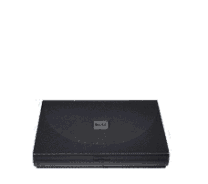RAID 0 Defined
Redundant Array of Independent Disks
Definition: RAID-0, or Redundant Array of Independent Disks, Level
0 - also called striping - is a method of storing data on multiple computer
storage devices - usually hard disks or disk partitions - by interleaving the data and spreading it
across the devices usually achieving faster read and write speeds.
|
|
Reads and writes sectors of data is interleaved between multiple drives. Downside:
It takes only one drive to fail and the entire array is affected.
Performance on RAID 0 is better than having a single drive as the work is split
between the array drives. Identical drives are recommended for performance as well as
data storage efficiency so it is recommended that you use not just the same make and
size but even the same model number.
You need a minimum of two drives to form a RAID 0. The disk array data
capacity is equal to the number of drive members times the smallest member capacity. For
example, one 1GB and three 1.2GB drives will form a 4GB (4 x 1GB) disk array.
Stripe Size - a value can be set from 1KB to 1024KB sector size.
The size can directly affect performance. If you are dealing mainly with small
files you may want to use an 8KB sector size whilst for Server and Audio/Video Editing – which
typically use large files – recommended sector size is 64KB.
 From ACNC: From ACNC:
RAID 0 implements a striped disk array, the data is broken down into blocks and
each block is written to a separate disk drive
I/O performance is greatly improved by spreading the I/O load across many channels and drives
More information on RAID
RAID 0 can be used together with
RAID 1 to provide RAID 0 + 1 giving the
advantages of both striping and mirroring.
An interesting concept is that RAID 0+1 is not the same as RAID 1+0. This
technical article explains the difference and makes a case for why RAID 1+0 is better than RAID 0+1.
|

 From
From 